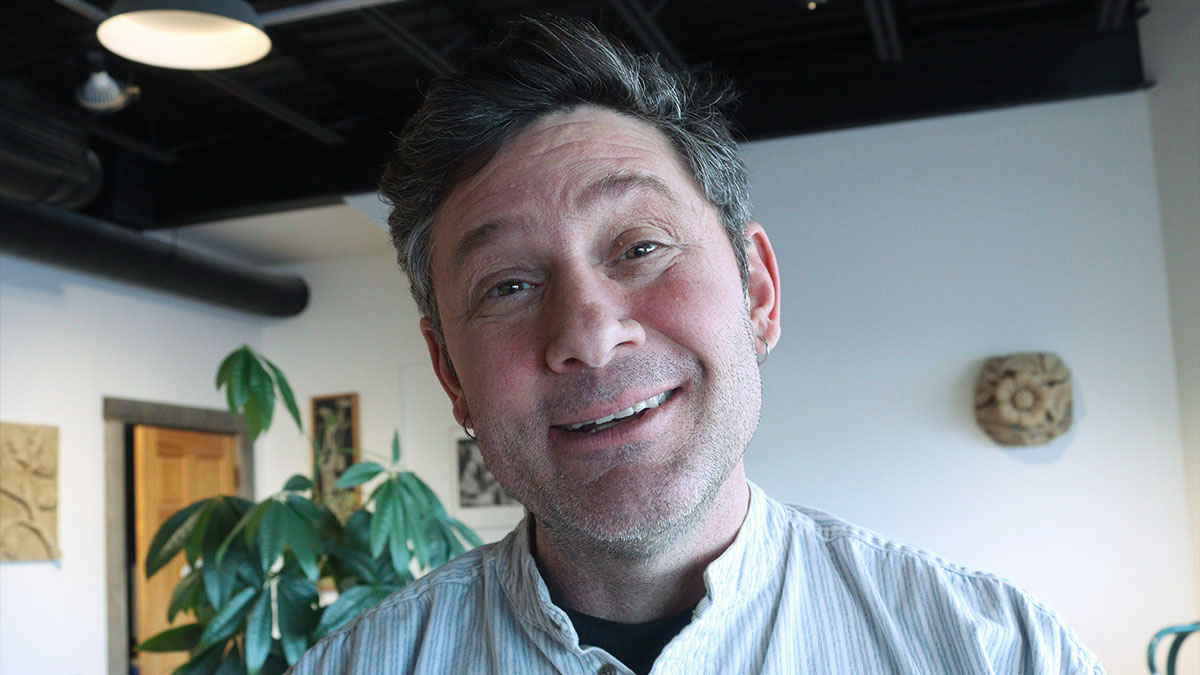From his work as a sculptor for the Canadian government to his annual festivals with dozens of Canadian stone carvers, Danny Barber is a linchpin of traditional sculpture technique in Ottawa.
Barber got his start as a gravestone carver for Barber Monuments, a business founded by his grandfather in 1957 and taken over by his parents more than a decade later. By the early 2000s, however, Danny decided he wanted flex his creative muscles.
“In the memorial business, there’s kind of a low ceiling for creativity. It’s a lot like graphic art now,” he said. “I wanted to do more sculpture.”
Architectural stonework courses were rare in North America at the time, Barber says, so he travelled to England to study at Weymouth College. There he learned about Gothic architecture, the medieval style of building used to erect grand cathedrals in Europe from the 12th to 16th centuries. The education prepared him for a job revitalizing Canada’s Parliament buildings.
“The Parliament buildings are Gothic Revival, so I’d say Ottawa is the best place to be for restoration stone carving,” he says.
An opportunity to work on Parliament’s West Block came in the mid-2010s while Barber was running a masonry company with colleague John-Philippe Smith. They bid on and won a contract to replace more than 1,800 stones over five years. They also restored some of the sculptures around the outside of the building.
Beyond feeling fortunate to work on the “biggest restoration project in the country,” Barber says it reaffirmed his respect for carving with hand tools.
“It’s kind of romantic. You can lose a lot of knowledge going to machinery, so it’s important to me to maintain the craft,.
“The designs are quite incredible, and the workmanship is the best you’ll see from the Victorian era. Some of the creatures you see and you go, ‘How did they think of that?’”

When Smith was soon hired to work with the Dominion Sculptor, Barber founded his own carving studio in 2018.
Since 2022, he’s continued to host two night classes in between his work as a Dominion Sculptor Team member for the Centre Block revitalization project. In his classes he often uses a round floral design from the West Block as a way to teach his students about traditional carving methods.
Patrick Imai, president of the National Capital Network of Sculptors, says Barber is one of the main artists keeping that traditional stone masonry alive in Ottawa.
“In Europe, it’s a far more mature trade, but here in Canada I don’t think the depth is there,” Imai says. “The Canadian influence of stone working would be lost (in Ottawa) without Danny.”
Eric Robinson is a retired trade commissioner who took an eight-week course with Barber at the start of 2024. He’s long admired the sculptures he saw during his travels to Italy and India, so he welcomed the challenge of “trying to get the stone to do what (Barber) does very easily.”
“Anything you do that challenges you is more fun than things that are easy,” Robinson says. “Because it’s slow and mechanical, sculpture feels artistic but a little more accessible for someone like me who doesn’t have an artistic flair.”

Other students have attended Barber’s classes for years including heritage conservationist Caroline Guay.
She says she enjoys the camaraderie of the studio and likes that students can all learn from each other.
Guay also attends an annual Canadian Stone Carving Festival begun by Barber in 2010. During the festivals, 30 to 50 carvers spend a weekend creating sculptures that are then sold in an auction. The festival has raised more than $100,000 for various charities over the years, with Guay’s art selling for up to $300.
“The pace of the weekend changes as you go along. The first day everybody’s catching up: it’s very social, and there’s a lot of shrapnel flying because people are hacking away at their pieces. Saturday’s pretty jovial but people are busy, and Sunday’s very serious,” she says. “Students can try it because there’s no judging. It’s a really nice group.”
Imai adds that the festivals are another important way Barber supports the capital’s stone carving community.
“It’s a fellowship. It brings people together to share stories, tools, techniques, and we check on how others are approaching (their art),” Imai says.
The 2024 Canadian Stone Carving Festival will be at Place Royale in Montreal from July 19 to 21.




